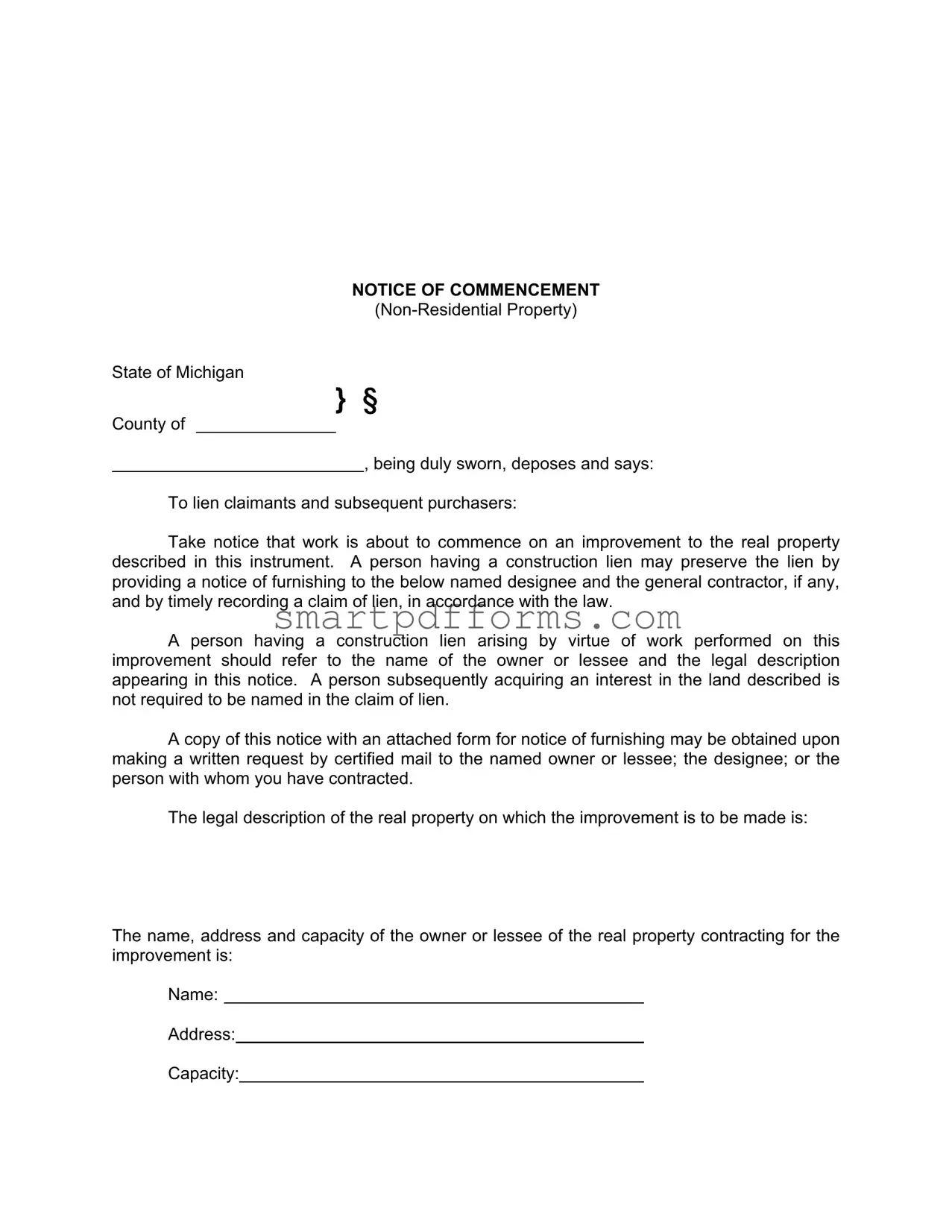NOTICE OF COMMENCEMENT
(Non-Residential Property)
State of Michigan
}§
County of
,being duly sworn, deposes and says:
To lien claimants and subsequent purchasers:
Take notice that work is about to commence on an improvement to the real property described in this instrument. A person having a construction lien may preserve the lien by providing a notice of furnishing to the below named designee and the general contractor, if any, and by timely recording a claim of lien, in accordance with the law.
A person having a construction lien arising by virtue of work performed on this improvement should refer to the name of the owner or lessee and the legal description appearing in this notice. A person subsequently acquiring an interest in the land described is not required to be named in the claim of lien.
A copy of this notice with an attached form for notice of furnishing may be obtained upon making a written request by certified mail to the named owner or lessee; the designee; or the person with whom you have contracted.
The legal description of the real property on which the improvement is to be made is:
The name, address and capacity of the owner or lessee of the real property contracting for the improvement is:
Name:
Address:
Capacity:
The name and address of the fee owner of the real property if the person contracting for the improvement is a land contract or lessee, is:
Name:
Address:
The name and address of the owner’s or lessee’s designee is:
Name:
Address:
The name and address of the general contractor, if any is:
Name:
Address:
WARNING TO PROPERTY OWNER, LESSEE OR DESIGNEE
MICHIGAN LAW REQUIRES THAT YOU DO THE FOLLOWING:
1.Before the commencement of any actual physical improvement, the owner or lessee shall record in the office of the register of deeds this notice of commencement.
2.Complete and return this form to the person who formally request in writing, within 10 days after the postmark on the request. The completed form shall be provided with a blank notice of furnishing to the requestor.
3.Provide a copy of this notice to the general contractor.
4.Post and keep posted a copy of this notice in a conspicuous place on the real property during the course of the actual physical improvement project.
_____________________________ |
_________________________________ |
|
(Printed Name and Capacity) |
(Signature of Owner, Lessee or Designee) |
Prepared by:
Name:
Address:
|
|
|
|
|
|
Subscribed, sworn to and acknowledged before me this |
|
day of |
|
NOTARY PUBLIC: |
My commission expires: |
|
County, MI
(Signature/Printed Name)


